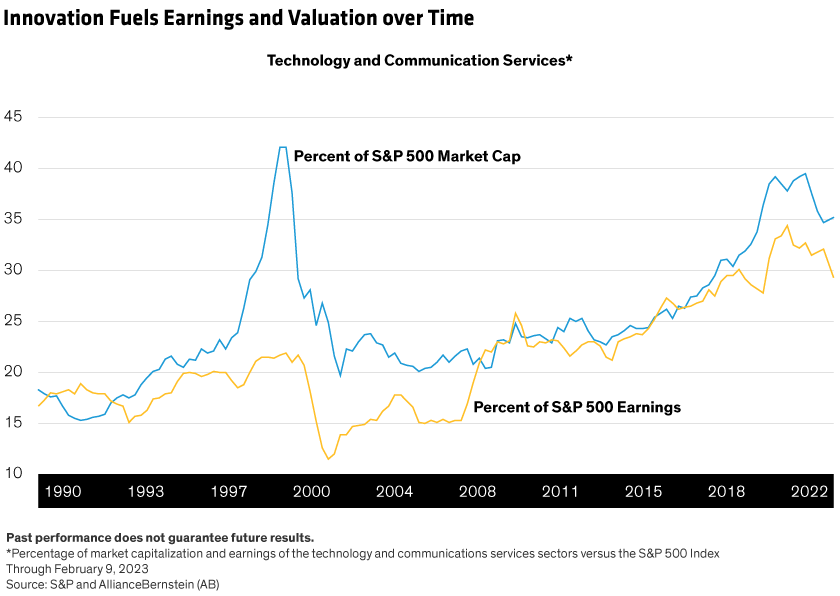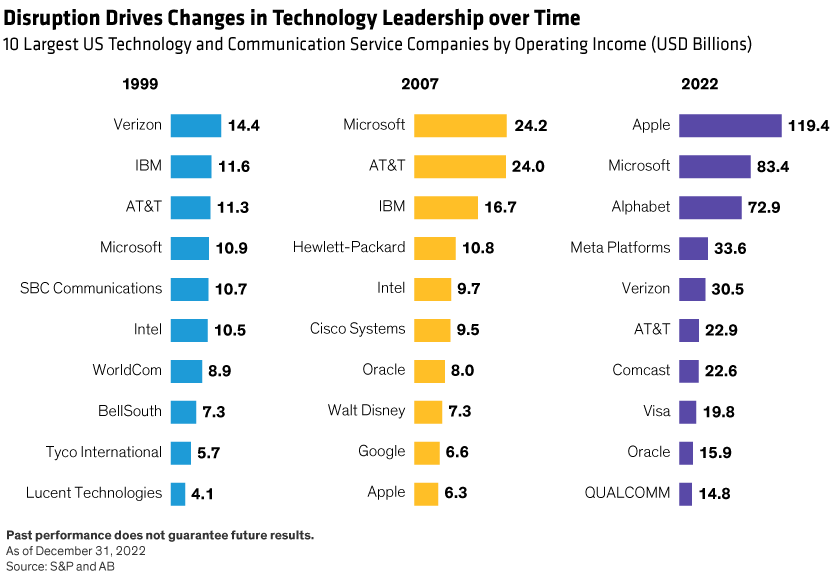by Lei Qiu
ChatGPT has ignited the world’s imagination about the power of artificial intelligence (AI). As science fiction is transformed into applications with real business potential, we may be on the cusp of a new product cycle that breathes new life into the technology sector after a harsh year for investors.
Since last November, the world has been abuzz with talk about AI. OpenAI’s launch of ChatGPT, a conversational chatbot built on the latest generation of large-scale language models (GPT-3), marked a huge leap forward in the application of AI for real-world uses. For the first time, people discovered the magic of communicating with a machine using natural language—and receiving rapid responses with an unprecedented level of sophistication.
Is This the Next “Killer App”?
The disruptive power spread like wildfire. By January 2023, the app had reached 100 million users. Microsoft made a multibillion-dollar investment in OpenAI. Google announced plans to shake up its search engine. ChatGPT unleashed profound business and social implications. Educators worry that it may soon be hard to distinguish real students’ work from computer-generated essays.
Surging popular interest has renewed optimism that this may be the “killer app” of cloud computing. While initial excitement over AR/VR gaming, cryptocurrency, and the metaverse has faded, industrial-grade inferencing offers transformative potential for productivity and economic growth.
Last year’s downturn left many investors concerned that the tech product cycle was over. Some see the recent rally as a bear market bounce. But innovation is a continuum: today, we’re experiencing a “hand-off” of growth leadership from the mobile-based ecosystem to cloud-based hyperscale computing. At the same time, the digital transformation in consumer technology of recent years is giving way to a breakthrough in industrial-scale productivity. Deploying an accessible, functional AI tool—which requires high-performance processing at scale—was previously impossible in a world of on-premises computing. Now, the abundance of cheap and powerful computing created by seven years of hyperscale cloud buildouts will enable new use cases.
This process should revive optimism in technology for investors. Technology and communications earnings have increasingly contributed to the broader US market’s earnings over the last two decades (Display). As a result, these two sectors make up nearly a third of the S&P 500’s market capitalization. Seen in historical perspective, we think the recent downturn is unlikely to stop the long-term trend, especially if the “next big thing” has landed.

In fact, technology downturns often turn out to be periods of leadership transition (Display). After the dot-com bubble burst, mobility took off in 2002. At the onset of the global financial crisis, the first iPhone was launched. Just when we least expect it, a disruptive technology emerges that demonstrates how innovation can redefine the future again.

AI itself isn’t new. The technology is built on several developments including deep neural networks, which reached a breakthrough point in 2012, and transformer models—an approach to training neural networks based on word completion, which was introduced in 2017. ChatGPT is based on GPT-3, the third-generation large language model (LLM) created by OpenAI and introduced in 2020, one of the most successful applications of the transformer models.
ChatGPT shows how years of research and development can culminate in groundbreaking technology that opens doors to new uses. Empowered by the acceleration of hyperscale computing since 2016, new models generate text and images in an almost human manner. Chat-based querying can add tremendous value to internet search. AI can write first drafts of 80% of computer code or help business users write emails. Struggling to put your thoughts into words? AI can help you articulate ideas for essays and blog posts, allowing users to choose “funny,” “professional” or “enthusiastic” tones. Even considering the early concerns regarding accuracy and capacity, as quality is likely to improve, the possibilities seem limitless.
Strategic Business Discussions to Begin
Major technology breakthroughs always set in motion discussions among corporate management. We believe AI will become as strategically important as mobility or digitalization and could accelerate the adoption of innovative technologies across the real economy. Companies will scramble to define how they plan to incorporate AI into their products because it can unlock both back-office efficiency and front-office capabilities that will become table stakes to compete with rivals. This comes at a moment when the world is struggling with high inflation and an acute labor shortage caused by deglobalization.
Microsoft has already announced plans to incorporate OpenAI’s models in its Bing search engine and Google is expected to launch its own version of AI-assisted search soon. Microsoft is also charging monthly fees for software developers to access Github’s code writing tool, while OpenAI is charging developers to build on its latest language models.
How Can AI Unlock Productivity Gains?
This is just the beginning. In the coming years, we expect many more productivity-enhancing innovations that we can only imagine today. Future uses could include developer automation, call center automation and automated expert assistants in areas such as legal advice and healthcare services.
When disruptive innovation first arrives, we often fail to fully quantify its potential. In previous cycles, the technology enablers came first. Then, an entire ecosystem was built, which drives needs for further innovation and often leads to a virtuous cycle. Today’s enablers can be found in industry segments including semiconductors, memory and networking; companies such as NVIDIA, AMD and Arista Networks could benefit from the push to lower the costs while continuing to improve the quality of AI queries, which are today much more expensive than traditional Google search.
Inflection Point for Technology—and Investors
For now, one thing is certain. We have reached an inflection point in the adoption of the next computer paradigm, where hyperscale computing is the new standard. The investment opportunities are not only found in the realm of venture capital and start-up companies.
It’s not too soon for equity investors in the technology sector to start researching the potential long-term beneficiaries of a potential AI-driven boom. There will be surprising winners and losers, and finding the opportunities will require skill, foresight and expertise. Yet this is a refreshing change for the sector, after markets were fixated on monetary policy, inflation, energy shortages and war since late 2021. That is the beauty of tech and disruptive innovation: transformational disruption transcends economic cycles, opening new doors for businesses and new roads to investing returns.
Lei Qiu is Portfolio Manager—Disruptive Innovation Equities at AllianceBernstein (AB)
The views expressed herein do not constitute research, investment advice or trade recommendations and do not necessarily represent the views of all AB portfolio-management teams and are subject to revision over time.



